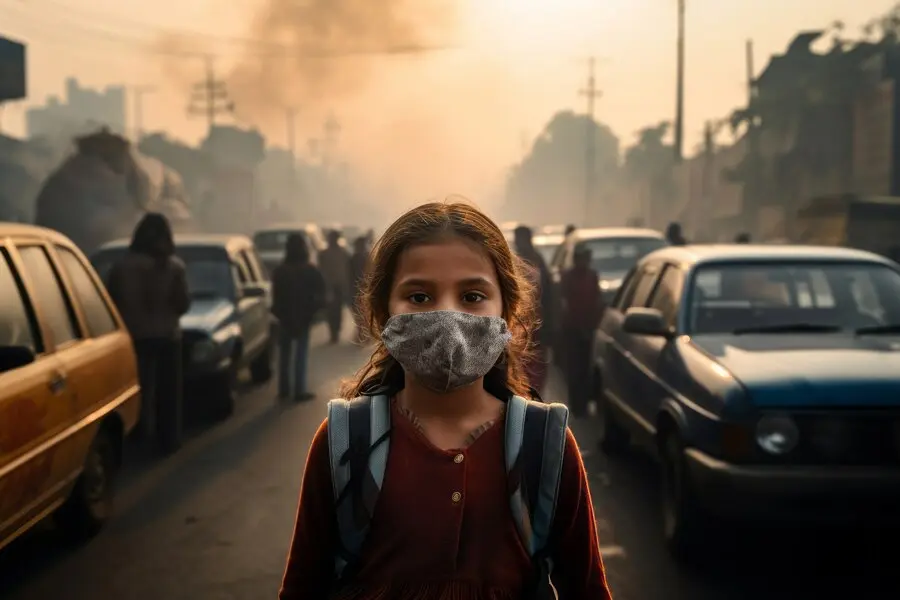New Delhi, 12 October, 2025: When most people think of hypertension, they imagine factors like stress, excess salt, or lack of exercise. But an alarming new driver of rising blood pressure rates worldwide is hiding in the air we breathe: air pollution.
Added to this is the accelerating impact of climate change—rising temperatures, extreme weather, and deteriorating air quality—creating a perfect storm for heart health. Experts warn that environmental factors are no longer background issues; they are becoming major contributors to cardiovascular disease, including hypertension.
How Air Pollution Affects Blood Pressure
Our cardiovascular system is highly sensitive to what we inhale. Tiny pollutants can enter the lungs, then the bloodstream, triggering inflammation, oxidative stress, and vascular dysfunction—all of which increase blood pressure over time.
1. Particulate Matter (PM2.5)
The most dangerous pollutants are PM2.5—microscopic particles less than 2.5 micrometers wide, emitted by vehicles, factories, and fossil fuel combustion.
- PM2.5 can penetrate deep into the lungs and enter the bloodstream.
- Once inside, it triggers inflammatory responses that stiffen arteries and increase vascular resistance.
- Over time, this can lead to chronic elevation in blood pressure and higher risk of cardiovascular disease.
2. Nitrogen Dioxide and Sulfur Dioxide
Gases like nitrogen dioxide (NO₂) and sulfur dioxide (SO₂) irritate the respiratory tract, reduce oxygen delivery, and increase oxidative stress, putting additional strain on the heart and blood vessels.
3. Short-Term Exposure vs. Long-Term Risk
Even short-term exposure can raise blood pressure for hours or days. Long-term exposure reshapes cardiovascular function, increasing the risk of persistent hypertension, stroke, and heart attack.
The Role of Climate Change
While air pollution directly worsens hypertension, climate change amplifies its effects and adds its own risks. Rising global temperatures, unpredictable rainfall, and extreme weather events impact both environmental and human health.
1. Rising Temperatures and Heat Stress
As temperatures increase, the body works harder to maintain stability. For people with existing heart conditions or borderline hypertension, extreme heat can cause:
- Dehydration, leading to blood thickening and increased pressure
- Vasodilation (widening of blood vessels), which initially lowers BP but may stress the heart over time
- Increased heart rate and metabolic load
In countries with hot climates, prolonged heat exposure is now recognized as a significant hypertension risk factor.
2. Extreme Weather Events and Anxiety
Floods, heatwaves, and storms disrupt lives, homes, and healthcare access. This leads to chronic stress and anxiety, known triggers of high blood pressure. Climate events can also:
- Limit access to fresh food and clean water
- Increase exposure to pollutants after disasters
- Disrupt medical treatments and medication supply chains
3. Pollen, Allergens, and Respiratory Strain
Climate change has lengthened allergy seasons and increased pollen production. This worsens respiratory problems, especially in urban areas. Breathing difficulties and oxygen fluctuations indirectly affect cardiovascular function and may elevate blood pressure.
Biological Mechanisms: Why the Environment Matters
When pollutants and heat stress the body, several biological responses occur:
- Inflammation: Pollutants activate immune cells, leading to systemic inflammation that damages blood vessel walls.
- Oxidative Stress: Free radicals damage vascular endothelium, reducing arterial flexibility and raising blood pressure.
- Autonomic Nervous System Activation: Pollution stimulates the sympathetic nervous system, increasing heart rate and constricting blood vessels.
- Hormonal Imbalance: Chronic environmental stress elevates cortisol, a known hypertension trigger.
Over time, this damage accumulates, making individuals more vulnerable to stroke, heart failure, and chronic kidney disease.
Who Is at Greater Risk?
While everyone is vulnerable to environmental factors, certain groups face higher risk:
- Individuals with pre-existing heart conditions
- Older adults with reduced cardiovascular resilience
- Pregnant women, as pollution can affect both mother and baby
- Children, whose developing organs are more sensitive
- Urban residents exposed to heavy traffic and poor air quality
According to the World Health Organization, over seven million premature deaths occur annually from air pollution — a significant share linked to cardiovascular complications, including hypertension.
Early Warning Signs of Pollution-Linked Hypertension
Pollution-related hypertension often develops silently. Some warning signs include:
- Persistent headaches or dizziness
- Unexplained fatigue
- Chest tightness or palpitations after outdoor exposure
- Irregular heartbeat
- Shortness of breath
- Flushed face or warmth during heat waves
Regular blood pressure checks are essential, particularly during high-pollution periods or hot weather.
Protecting Yourself in a Changing Environment
While you cannot control outdoor air pollution or global climate trends alone, personal preventive measures can help reduce exposure and protect your cardiovascular health.
1. Track Air Quality Daily
- Use AQI apps or forecasts.
- Avoid outdoor exercise or travel during poor air quality days.
2. Improve Indoor Air Quality
- Use HEPA air purifiers.
- Keep windows closed on high-pollution days.
- Avoid indoor smoke or kerosene-based stoves.
3. Stay Hydrated and Cool During Heatwaves
- Drink adequate fluids.
- Wear light clothing.
- Stay indoors or in shaded areas during peak heat hours.
4. Strengthen Your Heart with a Healthy Lifestyle
- Eat a low-sodium, balanced diet.
- Engage in regular indoor physical activity.
- Prioritize sleep and stress management.
5. Schedule Regular Health Checkups
- Monitor blood pressure consistently.
- Consult a doctor if readings remain elevated or symptoms persist.
Why Policy and Community Action Matter
Individual steps are crucial, but broader change requires government and community involvement:
- Transitioning to cleaner energy to reduce PM2.5 and NO₂ levels
- Enforcing stricter emissions regulations
- Creating urban green spaces to improve air quality and reduce heat
- Implementing early warning systems for heatwaves and pollution spikes
The World Health Organization has urged nations to treat air pollution and climate change as critical cardiovascular health issues.
Expert Insight
Cardiologists increasingly consider environmental exposure as significant a risk factor as smoking, poor diet, or genetics. Studies show individuals in high-pollution zones are more likely to develop hypertension earlier and experience worse cardiovascular outcomes than those in cleaner environments.
Hypertension is no longer just a lifestyle disease—it is also an environmental health emergency. Air pollution and climate change are fueling a silent rise in blood pressure rates worldwide.
The positive news is that early awareness and preventive action can significantly lower risk. By monitoring air quality, staying hydrated during heatwaves, reducing personal exposure, and supporting clean energy policies, individuals and communities can safeguard their heart health for the future.






